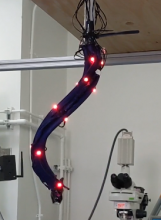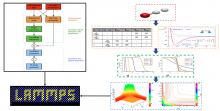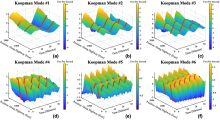Koopman Mode Decomposition Applied to the Optimal Control of a Pneumatic Soft Robot Arm
Due to their inherent flexibility and versatility, soft robots open up the field of robotics to a new range of capabilities not available to rigid robots. Due to their essentially infinite dimensional, nonlinear dynamics, the modeling and control of these systems using governing equations is not practical. Instead, data-driven methods are preferred. We apply the data-driven approximation of the Koopman operator to the modeling and control of a pneumatic soft robot arm. The resulting Koopman mode decomposition is used to distinguish the robot's fundamental dynamic modes and classify them based on frequency and decay rate. Existing research uses a black-box approach, whereas we use the decomposition of the dynamics into Koopman modes to reveal the underlying physics without knowledge of any governing equations. This approach also allows us to amplify or stabilize specific behaviors in order to achieve control objectives.





